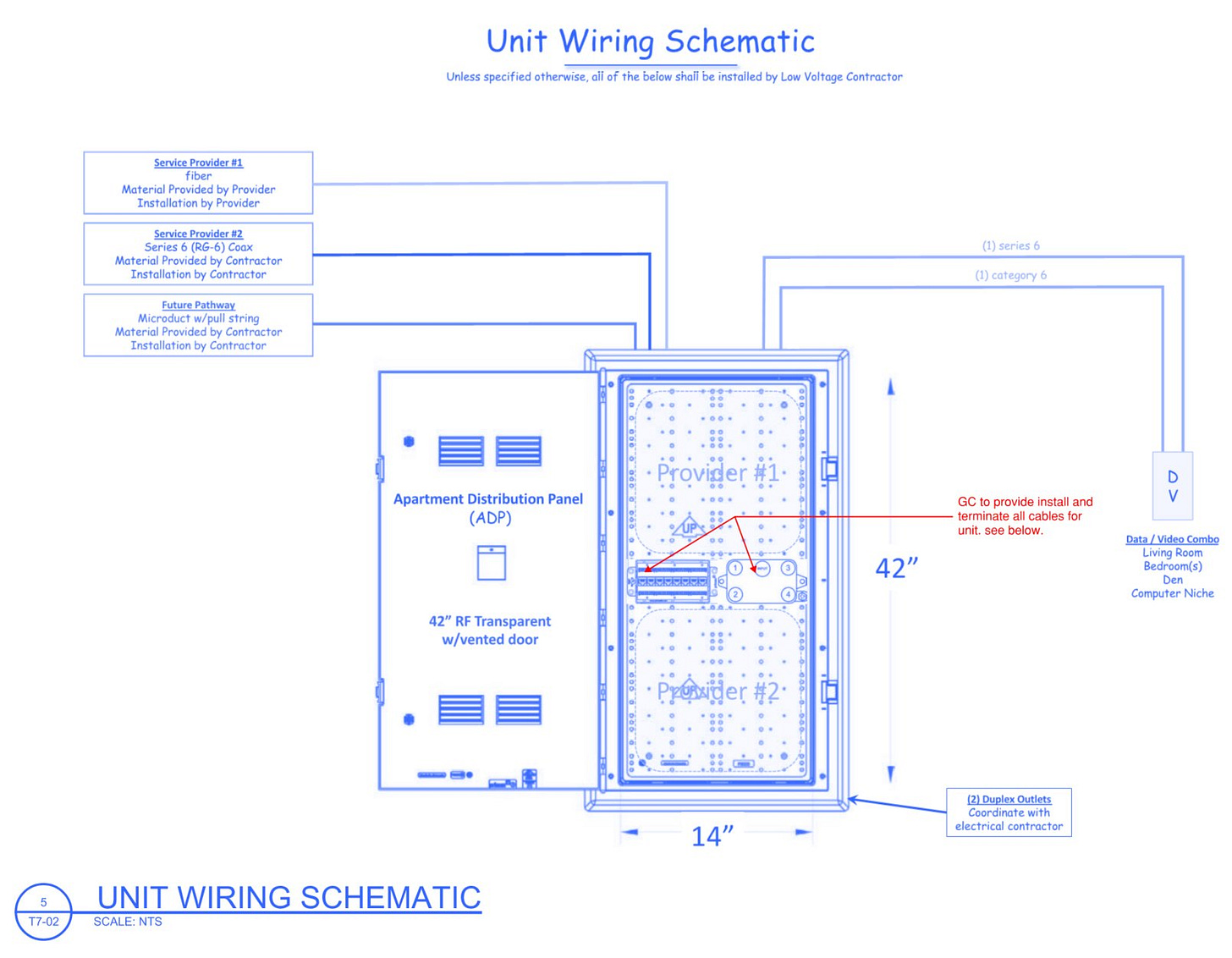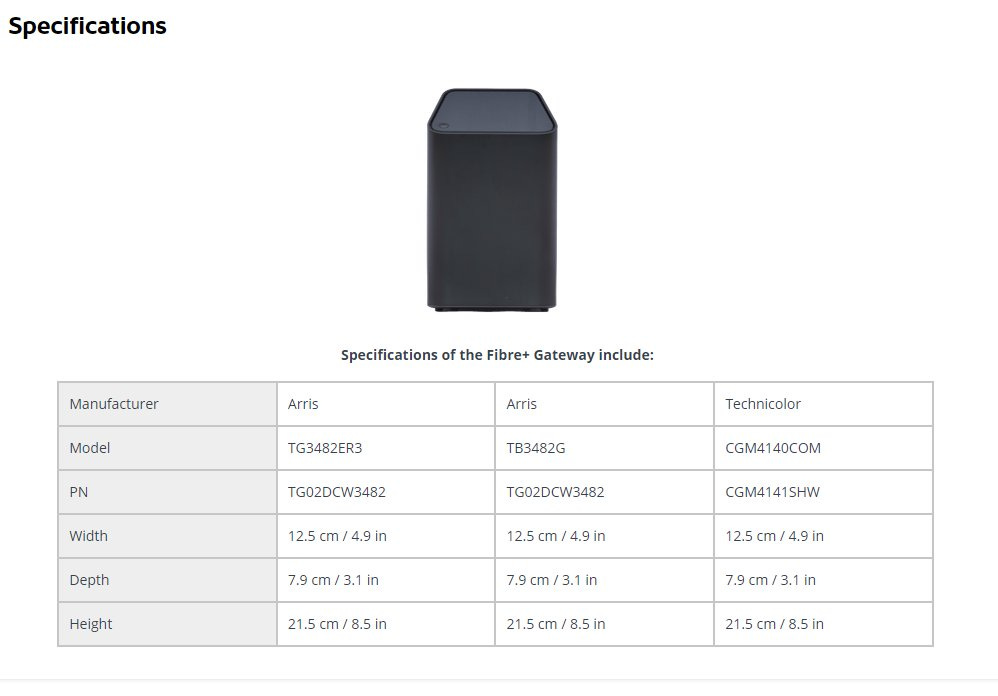Design Development: Media Panels
Home Media Panel Design & Layouts
I've been threatening this for a while... A thread on multi-family unit data panels, latest trends, how to spec, why, etc. I know I've got you all soooo excited!
First, this thread is ONLY going to focus on the unit side & overall development approach to getting internet (what is tv?) into a Multi-family or duplex unit. Mostly because there is enough to cover, and because IDF & MDFs (again another thread) have different issues. Second, although I personally believe that internet should be a utility similar to electricity & water, I'm approaching it from the development angle. If you want to have that convo about how municipal fiber etc would change this DM me for political talk. This is nerd talk now...
Internet is INCREDIBLY important to renters. They WILL & often make rental decisions based upon what services is available. And how fast it is. Like it or not if you are selling 500mbs and the place across has 1 gig, they get the lease. Renters ALSO want variety in product. They will also make decisions (un founded or not) between what providers are available to them. If they have a shitty internet experience, they may not know that when the lease, but they WILL remember it when they renew.As a developer your job is to bring the internet "tubes" to the apartment so the renter can choose their service. You have some options (more on that later) to provide it yourself or as part of rent, and that can make you (some) $. But I think that is falling out of favor.
So what SHOULD you try to have as a new build? At best, you should have TWO (2) competing providers (minimum) with a potential micro-duct pathway for a 3rd to install later. (This extra path is becoming a little moot, but is a side affect of trying to retrofit fiber in bldgs). Both providers should be capable of providing 1 gig down, and hopefully 1 gig up, but you can live with 250mb up. PER HOME. Your renter should have the option of the BEST local speeds at competitive prices. (They won't thank you, but that's okay).
Obviously you are limited by what is available. Some cities and suburban areas may only have 1 provider, or a limit of 250 mbs service, but FOR the most part you as a developer should be pushing for 2 providers with gig service for your homes. The 2 providers is an important concept, because you are paying for it in 2 ways: 1) more complicated to build for, slightly more $ 2) you are losing out on door fees and reimbursement rates. What are door fees & reimbursement? Virtually EVERY utility (except water?) will offer you compensation when you bring homes to market, and bring them as service to the renter. They know the resident will want internet / electricity, so they way to be able to sell it to them.
For electrical utilities, this usually is in them bringing free (or drastically reduced build cost) transformers and cable to serve the building. For internet, providers will generally install at their cost from the street to the unit data panel & PAY you a fee per unit. These fees are generally, like $150, nothing to move the needle, but cash none the less. They will ALSO pay you a recurring fee based upon how many homes sign up with their service. (They are trying to get your leasing staff to pitch their leaflets at lease up).
Again, this is marginal income based upon penetration, etc. So when you make your buildings competitive and force sign non-exclusive agreements, your providers will generally drop their door fees and reimbursement rates. Cuz they are facing competition, so they miss out on $. But this is good for residents, who see anywhere from a $15-$100 / month break on their internet (and thus their overall cost of living at your complex). And your residents are happier because they can say things like "Oh thank god I can switch, I can't stand [internet provider]".
Some developers, mainly student housing, choose to use 1 provider, often a tier 1 provider, to provide internet to the residents, either free of charge (built into rent) or as a monthly cost. As far as income goes, this is where a development can see some real added income. Downside is you now have to manage these systems, and unless it's part of your operations DNA, its a PIA. Student housing likes it because its another way to get a year of service for 9 months of use, and another upcharge stream. Additionally, you CAN sign an EXCLUSIVE agreement with a provider where only 1 of them provides service to your residents. Better return on penetrations, etc. BUT you (& your tenants) are at the mercy of 1 provider. Which just scares me. (What if they go out of business?).
We use a lawyer to negotiate these contracts, and as a result we end up with door fees, reimbursement for our panels, and non-exclusive agreements for the best speeds available. Residents love it. We shoot for the big providers only, and they often have Comcast, ATT & Google. Google won't pay you a dime by the way, and always show up late to meetings. But they have the brand name I guess. Okay, so all that said, let's talk about unit data panels. (Cause I think I may have said all the above in another thread in the past....).
What is the current tech? Well everyone wants gig, but the providers have 2 different ways of getting it to the home. They will use either fiber, or traditional RG6 cable with DOCSIS (comcast). Both will need to be installed during electrical rough-in. https://en.wikipedia.org/wiki/DOCSIS . They will route it from the nearest IDF through the walls and studs to the unit data panel. For the most part they will install fine, but prepared for your electrician to have to push/work with them, and if necessary redo their work to pass code. Since you contract with these guys directly, it is on YOU if they delay the GC or the project. And you will NEVER get your provider to pay for anything, or even acknowledge a schedule. Its like working with any other utility or government agency. Stay in their good graces.
For the box, bought & installed by GC, you want to locate it in the closet, but as close to the center of the space as possible. This cuts down on interference between units for wifi, and blankets the rooms with service. I make the MEP & Arch drawings show them during SD.


The box itself is pretty complex too. Here is our typical diagram. It needs a duplex outlet (or simplex with a power strip. [yes the GC will charge you for the power strip, but unless you want to buy several hundred from home depot and install them, its worth it.])
The box your need as your basis of design is this: https://primex.com/products/soho-pro-p4200nd-media-panel/… It plastic, has vents (equip gets toasty), knock outs and connections, fits in a 2x4 wall, but most importantly it is 5" DEEP. If you aren't buying a 5" min deep panel today you are in trouble. This is because providers are trying to change their approach. Now instead of waiting for a resident to call and schedule an install, they want to install the modem, broadcast wifi & let residents sign up for service from their phone. (its all about penetration & user growth). The issue is that the physical equipment to do this is big. like 4.9" cubed big. I guess they designed it to be pretty and sit on your TV console, but failed to realize they are installing like 50% of them in wiring cabinets. Here is an example of the equipment: Link And be sure to check the submittals, because subs and GC's LOVE to submit something different. Don't accept it. 5" deep.
And going back to what I said earlier, if you don't have your GC terminate the unit connections in the panel, when your provider installs the box, they may CHARGE YOU, instead of the tenant. And they are all union installers. Virtually everywhere. And that's it. Negotiate the contracts, buy the pieces through different people, put them all together, verify the people bought, installed, and teste the right pieces, coordinate the installs (after you take possession from GC), and viola, your residents have good internet.



